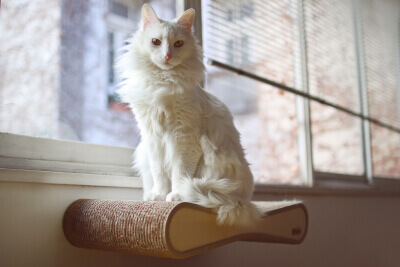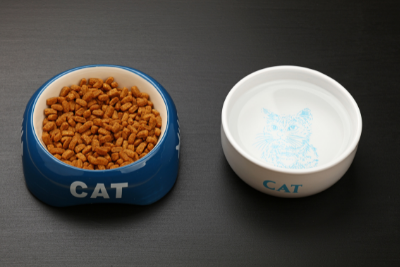There are so many litter boxes on the market today that it can make your head spin trying to find the right one for your cat or cats. Cats are highly selective about where they go to the bathroom, so you will want to put a decent amount of thought into this decision. Fortunately, there is a lot of information out there to help you decide. Make sure you think about your cat’s needs and nature when choosing. If you’re getting a new kitten, you may be able to have more control over their habits, but older cats may be set in their ways and require a specific litter box that they’re used to using.
Ultimately, it’s about finding what works for your home and cat. In this guide, we’ll cover all of the elements necessary to ensure that you make the best choice, no matter what your cat seems to need.
Covered Litter Box vs. Open Litter Tray: Which Suits Your Cat?
Choosing between a covered litter box and an open litter tray depends largely on your cat’s preferences, behavior, and your household environment. Here’s a breakdown of each to help you determine which may suit your cat better:
Why pick a covered litter box
-
Hides waste from sight
-
Contains loose litter
-
Helps odor control when paired with daily scooping
Why stay with an open litter tray
-
Let nervous cats scan the room
-
Easiest to enter for kittens and seniors
-
Air flows, drying litter faster
But before choosing what to use, measure first. Length should equal 1½ times your cat’s nose-to-tail distance for any style.
Self-cleaning automatic litter box options and easy maintenance tips
A self-cleaning litter box—also known as an automatic litter box—rakes or rotates after each use. It limits scooping chores and can cut smells if you empty the waste drawer twice a week. Pet-care writers warn that filters and trays still need regular change to avoid odor after only a few days. When choosing the best litter box for self-cleaning, check:
-
Noise level; timid cats bolt from loud motors.
-
Spare part cost; sensors and trays add to the bill.
-
Litter type; most models need clumping clay or silica.
Rinse the globe or rake monthly with hot water—no soap needed for routine grime.
Top entry, High sides, and Anti-tracking Designs for Tidy Floors
Top entry litter box models keep dogs out and block scatter. High walls also cut mess for cats that spray or dig. Look for:
-
Entry hole wider than a cat’s shoulders
-
A bottom depth of 15 cm or more for extra litter
-
Grooved lid that scrapes paws as the cat exits
For open boxes, a litter box with high sides that rise 20 cm can stop the backsplash. Add a fine-mesh mat outside as an anti-tracking litter box partner. Pair either shape with low-dust litter to prevent grit on shelves and in the lungs.
Choosing a large litter box for multiple cats or bigger breeds
Homes with more than one cat need one box per cat plus one extra. Two cats = three boxes, and so on. A large litter box for cats should be roomy, measuring at least 56 cm in length for an average adult and up to 66 cm for large breeds.
The litter box for multiple cats checklist:
-
Wide, open top so no cat feels trapped
-
Fast-clumping litter; limits queue time
-
Easy-to-clean plastic at least 3 mm thick
A litter box for large cats may be a plain storage bin with a doorway cut out. Skip lids if whiskers or backs rub the cover.
Space-saving, stylish, and quiet litter boxes for small apartments
Living in a studio calls for a space-saving litter box that tucks against a wall or slides under a table. Slim corner pans utilize wasted space while maintaining a 45 cm turning radius inside.
Want décor to blend? Choose a stylish litter box with gentle curves, or opt for a furniture disguise. Stay brand-free by focusing on color and shape, such as white cubes, matte black tubs, or light wood veneer.
A quiet litter box is essential when the box is situated near the sofa. Manual sifting trays, slow gears, and rubber feet hush scraping sounds. These perks help a litter box for small apartments stay polite to roommates.
Special Needs: Litter Boxes for Kittens and Senior Cats
A litter box for kittens should have a low 5 cm front wall so that little legs can step in easily. Use non-clumping litter until the kitten stops tasting grains. Replace every few weeks as the cat doubles in size.
A litter box for senior cats should feature:
-
Entry no taller than 7–8 cm
-
Non-slip ramp or step
-
Room to stretch arthritic joints
Both age groups like the pan far from food and busy hallways. Soft lighting helps seniors with fading sight find the box.
Odor control, Waterproof Linings, and Low Dust Choices for Sensitive Noses
Even the best litter box for odor control fails if it is cleaned rarely. Scoop twice daily and deep wash weekly. For added protection, opt for an odor-control litter box featuring carbon inserts or a vent slot for a plug-in filter.
A waterproof litter box may feature a silicone liner or sealed seams to prevent urine leaks, making it particularly handy for male cats or dogs that spray. Pair it with an eco-friendly cat litter box made from recycled plastic or plant fiber if sustainability is a priority. Using dust-free litter in a low-dust litter box setup helps humans who sneeze and cats with asthma.
Budget to Premium: Finding an Affordable Yet Best Value Litter Box
Price ranges by type, size, and extras:
| Category | Typical Cost | Notes |
|---|---|---|
| Basic open tray | Low | Most affordable cat litter box choice |
| High-sided tray | Moderate | Good best value litter box pick |
| Top entry or hooded | Moderate–High | Adds privacy |
| Automatic | High | Sits in premium cat litter box tier |
How to Choose a Litter Box: Size, Access, and Routine Care
Use this quick test:
-
Measure: Nose-to-tail x 1.5 for length.
-
Entry: Select low, side, or top based on mobility and dog risk.
-
Material: Thick plastic reduces scratches while hiding odors.
-
Location: One quiet box per floor, away from appliances.
-
Cleaning routine: Scoop twice a day, wash weekly, replace every 12–18 months.
If odor lingers, switch litter type, increase depth to 5 cm, or add another box. What is the best litter box for odor? The big one was open enough for air and kept clean on schedule.
Which Litter Box Is Best for Your Cat?
Whether you buy a plastic tote for $10 and create your own litter box or choose a top-of-the-line automatic model, it’s about figuring out what best suits your needs. For people on a budget, a standard covered litter box should do the trick just fine. Remember that if you’ve got more than two cats, you’ll need an extra litter box for each additional cat (three cats need at least two boxes, and so on).
The biggest thing is to think about the cleaning convenience and the ease of use for your cat. If they’re not comfortable, they won’t use it, or they won’t use it correctly, and that could make your job of cleaning a lot more work. If you don’t like the litter box, you’re going to hate taking care of it, which can create more stress than necessary. This is one area where it’s okay to splurge a little and give yourself and your cat less to worry about.
Make sure that you keep your cat’s bathroom behavior in mind, and if you are shopping for a new kitten, pay attention to their habits so that you can choose the ideal litter boxes for them as they grow. As long as you do that, you’ll be on the right track no matter which style you choose or where you put it.




